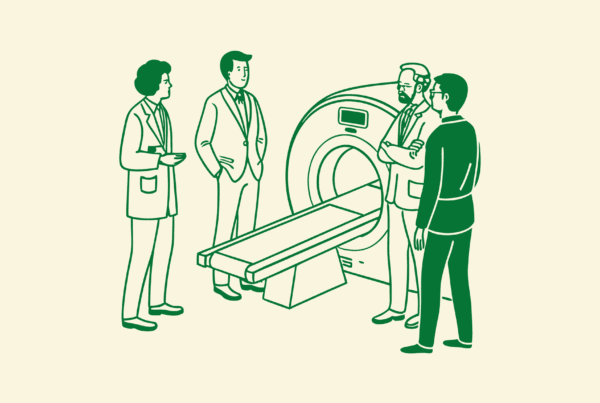Selling your Urgent Care practice in Washington, DC, involves more than just finding a buyer. You are navigating a unique market defined by a highly competitive landscape and significant regulatory hurdles. Understanding these factors is the first step toward a successful transition. This guide provides key insights into the DC market, from valuation to post-sale planning, helping you prepare for what is ahead.
Market Overview
The Washington, DC urgent care market presents a story of two distinct realities. Understanding both is critical before you consider a sale.
A Competitive Environment
The broader DC metropolitan area is dense with urgent care options, hosting around 131 centers. This saturation means buyers have choices. They are looking for practices that are not just profitable but also efficient and well-positioned to compete. For you, this means that simply being “for sale” is not enough. You must stand out. A professionally prepared practice with a clear growth story will attract the most serious attention and the best offers.
The Certificate of Need Advantage
While the surrounding area is crowded, DC proper only has 7 urgent care centers. This is due to the District’s strict Certificate of Need (CON) laws. These laws create a high barrier to entry for new competitors. Your existing CON is not just a license to operate. It is a valuable, strategic asset that can significantly increase your practice’s valuation. Buyers are often willing to pay a premium for this built-in market protection.
Key Considerations
Beyond the market dynamics, buyers will scrutinize the inner workings of your urgent care practice. You should focus on three areas well before a sale. First is your operational model. Is the practice’s success tied entirely to you, or is it driven by a team of providers? A multi-provider, system-driven practice is less risky for a buyer and commands a higher value. Second is your financial story. Buyers look at Adjusted EBITDA, not just net income. This means normalizing your expenses to show the true, sustainable cash flow of the business. Finally, you need a clear growth narrative. Can you demonstrate potential for new services or expanded hours? Buyers pay for the future, not just the past.
Market Activity
The demand for well-run urgent care practices in protected markets like Washington, DC, remains strong. Both financial sponsors, like private equity groups, and strategic buyers, such as local hospital systems, are actively looking for opportunities. However, not all buyers are the same. Each has a different motivation for acquiring a practice, which will influence the type of deal they offer. Understanding these buyer types is key to positioning your practice effectively.
| Buyer Type | Primary Goal | What This Means for You |
|---|---|---|
| Private Equity Group | To build a larger platform and increase EBITDA for a future sale. | Often offer partnership models (equity rollover) and bring operational resources. |
| Hospital System | To expand their network and direct patient flow to their facilities. | May focus on community integration and maintaining your practice’s local brand. |
| Existing Practice/MSO | To gain market share and achieve operational efficiencies. | Looking for a turnkey operation they can integrate quickly into their existing systems. |
The Sale Process
A successful practice sale is not a passive event. It is a managed process designed to protect your confidentiality and maximize your outcome. It begins long before the first conversation with a buyer. The initial phase involves preparing your financials and crafting the narrative we discussed. Next, a professional valuation establishes a credible asking price. Only then does confidential marketing to a curated list of qualified buyers begin. This disciplined approach creates competitive tension, which often leads to better offers. Once an offer is accepted, the due diligence phase begins. This is an intensive review of your entire operation. Proper preparation here is key to preventing surprises that could derail the transaction before you reach the closing table.
How Your Practice is Valued
Determining your practice’s value is more than a simple formula. It is about assessing its true earning power and future potential. Sophisticated buyers start with a metric called Adjusted EBITDA (Earnings Before Interest, Taxes, Depreciation, and Amortization) to see the real cash flow. This figure is then multiplied by a number, the valuation multiple, to arrive at the Enterprise Value. While a practice generating over $1M in EBITDA might see a multiple of 5.5x to 7.5x, that number is heavily influenced by several factors:
- Scale and Provider Model: Larger, multi-provider practices are less risky and receive higher multiples than smaller, owner-reliant ones.
- Growth Trajectory: A track record of consistent growth and a clear plan for future expansion are highly attractive to buyers.
- The CON Asset: In DC, your Certificate of Need acts as a significant value enhancer, justifying a premium multiple due to the high barrier to entry it creates.
- Quality of Financials: Clean, well-documented financial records that are prepared for scrutiny give buyers confidence and support a stronger valuation.
Post-Sale Considerations
The closing of the sale marks a new beginning, not just an end. Planning for this next chapter is a critical part of the process. Your role after the transaction depends entirely on the deal structure and your personal goals. You might transition out completely, stay on as a clinical leader for a set period, or retain equity in the new, larger entity. This “second bite at the apple” through an equity rollover can provide significant future upside. Furthermore, the structure of your sale has major tax implications. Optimizing your after-tax proceeds requires careful planning with an advisor. Thinking through these elements ensures that the transition protects not only your financial future but also the legacy and staff you have worked so hard to build.
Frequently Asked Questions
What makes the Washington, DC urgent care market unique for sellers?
Washington, DC has a competitive urgent care market with approximately 131 centers in the metropolitan area. However, due to strict Certificate of Need (CON) laws, DC proper only has 7 urgent care centers, creating a high barrier to entry for new competitors. This CON is a valuable asset for sellers as it can increase the practice’s valuation by providing market protection.
How should I prepare my practice financially before selling?
Buyers focus on Adjusted EBITDA rather than simple net income. You should normalize your expenses to reflect the true, sustainable cash flow of the business. Clean, well-documented financial records that can withstand thorough scrutiny will inspire buyer confidence and support a stronger valuation.
What buyer types are active in the Washington, DC urgent care market, and how do their goals affect offers?
There are three main buyer types: Private Equity Groups (seeking to build larger platforms and increase EBITDA), Hospital Systems (aiming to expand networks and direct patient flow), and Existing Practices or MSOs (looking for market share and operational efficiencies). Each offers different deal structures and priorities, so understanding buyer motivations is crucial to positioning your practice.
What role does the Certificate of Need play in valuing my practice?
In Washington, DC, the Certificate of Need (CON) is a strategic asset due to the high barrier it creates for new competitors. It not only licenses the operation but also significantly enhances the practice’s valuation. Buyers often pay a premium for practices with an existing CON because it offers built-in market protection and decreases competition risk.
What should I consider for post-sale planning?
Post-sale planning is vital and depends on the deal structure and your personal goals. Options include transitioning out completely, staying on as a clinical leader temporarily, or retaining equity through a rollover for future upside. Additionally, tax implications of the sale structure should be planned with an advisor to optimize after-tax proceeds and protect your financial future and the legacy of your practice.



